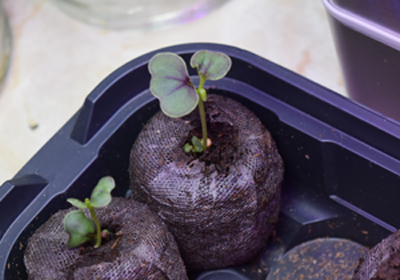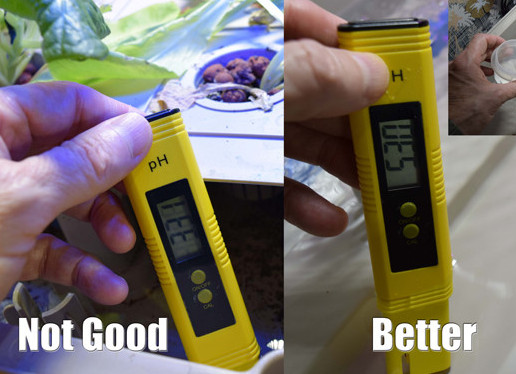
How does your garden grow? As we have discussed pH plays a very important role in how well your plants will be able to absorb nutrients; but what about the level of nutrients that are in the solution itself, that can be measured by parts per million (PPM). You don’t want to over or under feed your plants. Underfeeding results can be toxic to plants. Please note specific plant requirements will vary according to regional climatic conditions, and from season to season within that region. Because soil-grown plants get most of these elements from the soil, with hydroponics there is no soil to get the elements from, so you need to provide the nutrients for the plants.
Why Are Nutrients Important?
Plants gotta eat sometime. Especially once your seeds get beyond the sprouting phase, nutrients become a life or death necessity. For nutrients to be incorporated into a hydroponic system, they must be soluble in water. A great benefit is that the hydroponic grower has complete control over the implementation of the nutrients, as well as the ability to immediately monitor.
Getting the right mix of nutrients can be a complex issue. Anyone not familiar with hydroponic nutrients should just stick with a proven formula from a reputable manufacture, and simply follow the directions on the container. This will let you learn the basics of growing hydroponically before experimenting. Off the self hydroponic nutrients can be expensive, as you gain experience, you can migrate into mixing your own. Check here for pre-mixed and mix your own resources that we have found. If you have any resources that you think we should add or even delete please let us know in the comment section below.
What Nutrients Do You Need
The composition of the nutrients is important and there are over twenty elements that are needed for a plant to grow. Carbon, hydrogen, and oxygen are absorbed from the air and water. The rest of the elements, called mineral nutrients, need to be dissolved in the correct ratios. A good Hydroponic nutrient mix should contain all of these elements:
Nitrogen (N), Potassium (K), Phosphorous (P), Calcium (Ca), Magnesium (Mg), Sulphur (S), Iron (Fe), Manganese (Mn), Copper (Cu), Zinc (Zn), Molydenum (Mo), Boron (B), Chlorine (Cl).
Temperature Is Important
In nature, plant roots grow underground, for most hydroponically grown plants, you need to replicate the root zone temperatures to 68-72 degrees. It doesn’t mean that your plant will die if the nutrient temperature is outside of this range. It doe mean that you may not get all that the plant can be.
What Should the PPM and pH Levels Be?
Plants will have a higher nutrient requirement during cooler months, and a lower requirement in the hottest months. So, a stronger nutrient solution should be maintained during winter, with a weaker solution during summer when plants use more water than nutrients.
A general rule of thumb is that water PPM at a given stage of growth should be:
- Seedlings: 100-250 (nutrients aren’t needed here, hence there’s not a lot of particles needed)
- First Half of Vegging Cycle: 300-400 (this is usually after you transplant, which still doesn’t require many nutrients)
- Second Half of Vegging: 450-700 (you’ll start giving your plants more nutrients at this stage)
- First Half of Flowering: 750-950 (your plants will be eating more than they grow, so they’ll be taking in more nutrients)
- Second Half of Flowering: 1000-1600 (this is when your plant’s eating the most active, especially if you give it additives)
- End of Flower, Entering Harvest: As close to 0 as possible (this is when you’ll be flushing your plants, you don’t want to waste nutrients)
The following chart will give you an idea of what the different vegging plants will need once they hit their stride:
|
Plants |
pH | PPM |
| Ambra Radicchio | 5.5-6.5 | |
| Artichoke | 6.5-7.5 | 560-1260 |
| Asparagus | 6.0-6.8 | 980-1260 |
| Bean (Common) | 6.0 | 1400-2800 |
| Beans (Italian Bush) |
6.0-6.5 |
|
| Beans (Lima) | 6.0-6.5 | |
| Beans (Pole) | 6.0-6.5 | |
| Beetroot | 6.0-6.5 | 1260-3500 |
| Broad Bean | 6.0-6.5 | 1260-1540 |
| Broccoli | 6.0-6.5 | 1960-2450 |
| Brussels sprout | 6.5-7.5 | 1750-2100 |
| Cabbage | 6.5-7.0 | 1750-2100 |
| Capsicum | 6.0-6.5 | 1260-1540 |
| Carrots | 6.3 | 1120-1400 |
| Cauliflower | 6.0-7.0 | 1050-1400 |
| Celery | 6.5 | 1260-1680 |
| Collard Greens | 6.5-7.5 | |
| Cucumber | 5.8-6.0 | 1190-1750 |
| Eggplant | 5.5-6.5 | 1750-2450 |
| Endive | 5.5 | 1400-1680 |
| Fodder | 6.0 | 1260-1400 |
| Garlic | 6.0 | 980-1260 |
| Leek | 6.5-7.0 | 980-1260 |
| Lettuce | 5.5-6.5 | 560-840 |
| Marrow | 6.0 | 1260-1680 |
| Okra | 6.5 | 1400-1680 |
| Onions | 6.0-6.7 | 980-1260 |
| Pak-Choi | 7.0 | 1050-1400 |
| Parsnip | 6.0 | 980-1260 |
| Pea | 6.0-7.0 | 980-1260 |
| Peas (Sugar) | 6.0-6.8 | |
| Pepino | 6.0-6.5 | 1400-3500 |
| Peppers | 5.8-6.3 | 1400-2100 |
| Bell Peppers | 6.0-6.5 | 1400-1750 |
| Hot Peppers | 6.0-6.5 | 2100-2450 |
| Potato | 5.0-6.0 | 1400-1750 |
| Pumpkin | 5.5-7.5 | 1260-1680 |
| Radish | 6.0-7.0 | 840-1540 |
| Spinach | 5.5-6.6 | 1260-1610 |
| Silverbeet | 6.0-7.0 | 1260-1610 |
| Sweet Corn | 6.0 | 840-1680 |
| Sweet Potato | 5.5-6.0 | 1400-1750 |
| Swiss Chard | 6.0 6.5 | |
| Squash (Summer) | 5.0-6.5 | |
| Squash (Winter) | 5.0-6.5 | |
| Taro | 5.0-5.5 | 1750-2100 |
| Tomato | 5.5-6.5 | 1400-3500 |
| Turnip | 6.0-6.5 | 1260-1680 |
| Zucchini | 6.0 | 1260-1680 |
Most beginners focus on is pH, as they should, when you become a little more advanced in knowledge, you should start considering PPM.
GETTING a pH AND PPM BASELINE
Before you start adjusting your PPM levels you need to check to make sure your water is ready to feed plants. If you are using distilled water – than you shouldn’t have any problems. If you are using tap water that might be a problem. Let’s say that your tap water is OK not perfect, but, OK – you will need to measure and record what the PPM of that water is. Most growers agree that tap water is helpful since it has minerals like magnesium and calcium that help plants. The pH and PPM readings of your spigot tap water will be your baseline, when you add nutrients to the water your pH and PPM will change.
The PPM reading difference between the reading of your nutrient added water and the baseline will be the amount of nutrient that is actually in the solution.
ADJUSTING pH and PPM
- A quick fix for pH, while you could use in some non-bubbling tanks baking soda and vinegar, I would recommend something like Bloom City pH Up and Down. It only takes ¼ teaspoons to change smaller units. An even for larger units – a little bit goes a very long way. Bloom City is very effective, and it is a great deal for both, even if it is 32 oz containers for each.
- For a quick fix when PPM’s are high, just add a bit of freshwater with a good pH level should drop your PPM.
- When readings are low it’s time to feed your plants. When you add nutrients to your feeding solution your PPM’s will go back up. The goal here is to get your pH and PPM in balance so that your plants are happy and healthy.
IN CONCLUSION
Just remember that hydroponic growing is like any good framing system it takes constant adjustments for optimum plant health. If you are just getting started suggest that you purchase a basic set of digital inexpensive meters to get yourself going such as pH and TDS Digital Meter
So, wishing you success in your journey to becoming more self-sufficient. You can hydro grow – I look forward to your comments. If you have any questions, please contact us or feel free to visit any of our current chapters in “Hydroponics 101 – A Guide to Hydroponic Growing”

Leave a Reply